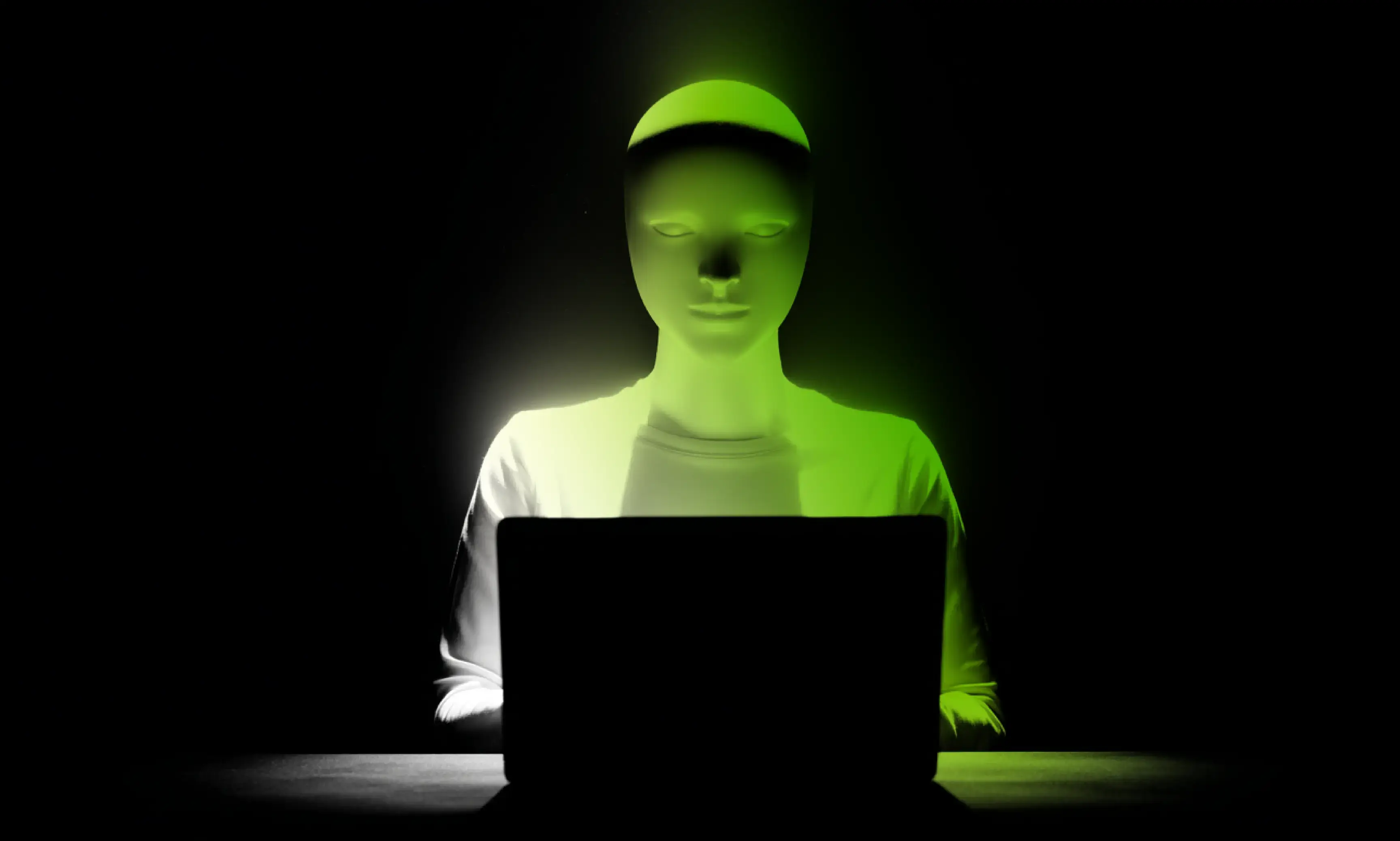This article was written by:
Uhura has been using AI for a long time – and now on a daily basis. Our editorial team writes more efficiently, our graphic and motion designers use image and video generation, and our consultants optimize research and analysis processes. We also build AI agent systems for our clients. So, we have a pretty solid overview.
What we’ve been noticing more and more lately – and what we’ve already pointed out in our articles here (Brand and AI) and there (B2B and People) – is that AI is still too often seen purely as a tool for efficiency, especially in the creative field. Many clients associate it with the idea of replacing creative work at the push of a button. And yes – many process steps do become more efficient, iterations faster, our coordination and research more effective. This also translates into a more extensive output for clients – without increasing the budget.
But caution is needed: examples like deBeukelaer, the Coca-Cola Christmas commercial, or the cringeworthy avatar influencer from the German Tourist Board clearly and unmistakably show how harmful the uncritical use of AI systems can be for brand communication.


In a flood of content and a sea of clearly inauthentic mediocrity, people are still looking for real stories and fresh inspiration. AI gives us a powerful tool – not just to work more efficiently, but more importantly, to create new forms of storytelling, to push visual boundaries, and to develop a distinct aesthetic and an expanded creative space for digital content and storytelling.
AI influencers like Lil Miquela (with over 2.4 million Instagram followers) through luxury brand collaborations, or Lu do Magalu (with nearly 8 million Instagram followers) as a digital brand ambassador, have turned their technological origins into a core part of their brand identity. They are clearly AI-generated, but are consistently staged in poses and scenarios that play with this technological aesthetic – reinterpreting and elevating it in creative ways.

Why didn’t the German Tourist Board take full advantage of the technological possibilities and, for example, use its avatar campaign to fully tap into personalization—maybe even creating a unique avatar for each user? After all, Germany is diverse, and so are the reasons people travel there.
Why did Coca-Cola drain all the emotion from its uninspired spot through AI generation? Why wasn’t the distinctly technological visual language used to retell the story—for instance, by transporting the iconic Christmas trucks into an imaginative holiday world of the future? Sure, the result might have been clearly AI-generated—but within that context, it could have made sense and added meaning.
Creatives in agencies and studios need to step up—and break free from the trap of efficiency-driven arguments through bold, new ideas.
As so often, art offers us a fresh and timely lens through which to approach this discussion. In Understanding Media, Marshall McLuhan noted that art has the ability to "anticipate future social and technological developments." Experimental filmmaker Hito Steyerl, who has long explored the relationship between art and digital technology, observed that visualizations are often perceived as truthful representations of processes. But rather than taking them at face value, we should become more aware of their underlying aesthetics and implications—and learn to engage with them critically and analytically.
In 2017, artist Trevor Paglen set out to show how artificial intelligence sees our world—and what that means for us. His project, Sight Machine, involved filming a live performance by the Kronos Quartet and running the footage through a variety of AI systems in real time—including facial recognition, object detection, and even missile targeting algorithms.

The results of these AI analyses were displayed on screens during the live performance, allowing the audience to experience firsthand how the machines "perceived" the music and the people on stage. Trevor Paglen’s goal was clear: to show that artificial intelligence is not neutral. It is shaped by specific values and interests—which is precisely why we must question it critically.
The juxtaposition of vibrant live music with the often alien, mechanical interpretations generated by AI encourages reflection on the fundamental differences between human and machine perception.
For authentic and dynamic brand communication, this raises an important question: are we allowing AI to diminish emotional storytelling—or are we using it to enhance it? Right now, there’s a real opportunity to position brands in innovative ways—not by simply following trends, but by helping to shape them.
Of course, not everyone works on high-impact campaign concepts and strategies every day. In daily practice, client–agency relationships often revolve around the creation of communication assets that are more functional than emotional—especially when the content is educational. In these cases, explanatory videos, illustrative visuals, infographics, UX concepts, or data visualizations can be produced more quickly and efficiently with the help of AI.
Still, a strong and distinctive visual language that aligns with the brand and integrates seamlessly into the broader brand story remains a strategic asset—especially in an AI-driven world increasingly filled with interchangeable and often mediocre content.





